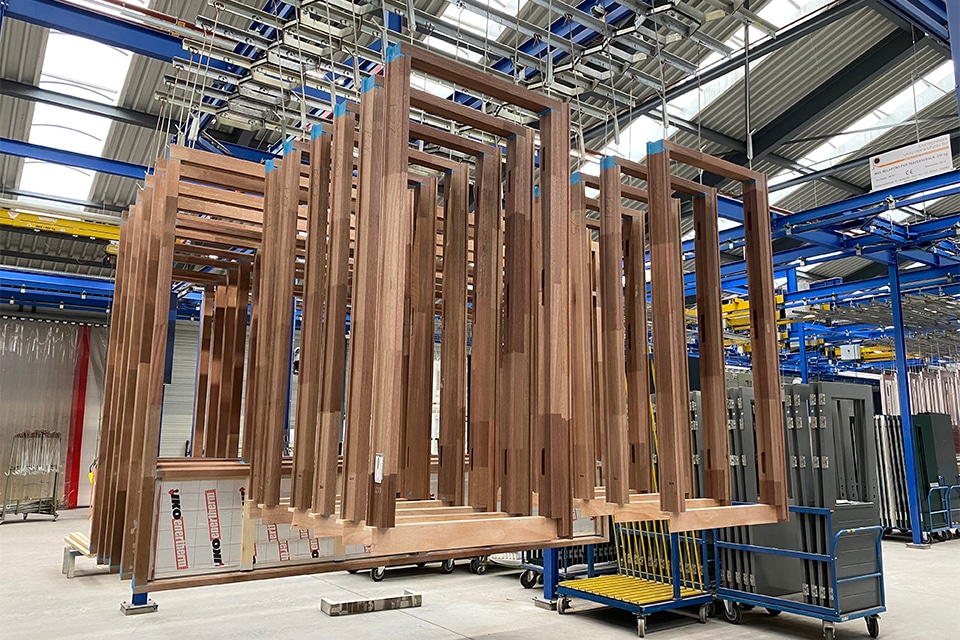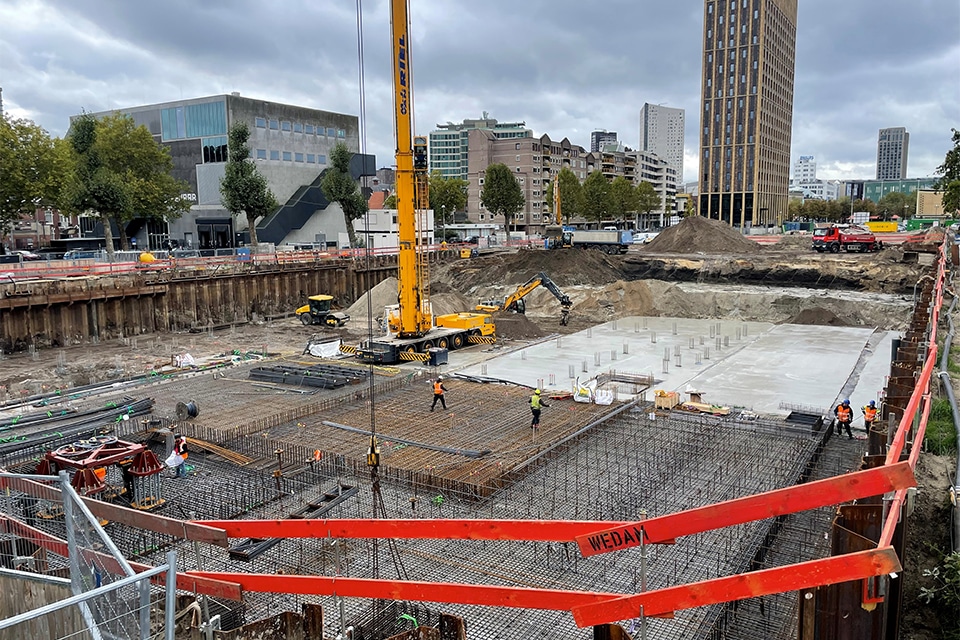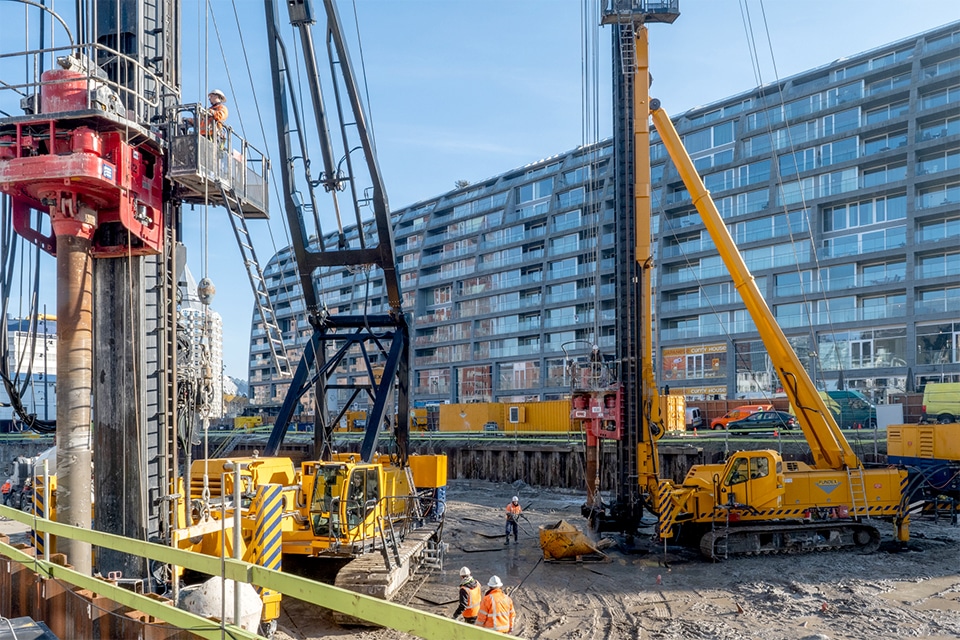
Energy efficiency? Yes, ... but without concessions on healthy and comfortable living!
New construction in 2020 is all about climate awareness, circularity, NOM, BENG, ... all terms that are indispensable in construction. And this is also evident in the requirements for ventilation and sunprotection. Here you can read how Renson, as a pioneer in these fields, anticipates, responds and even goes a step further.
Provide a '+' in ventilation
Good news, because as long as you as an architect, consultant or project developer choose a "+" in ventilation, both systems with natural fresh air supply (system C+) as WTW systems (system D+) perfectly meet the prescribed requirements. And that while, thanks to their demand-driven operation, they optimally relieve the occupants and provide the best possible comfort and indoor climate with customized ventilation. 2 birds with 1 stone, in other words!
Custom ventilation: per room in the home
The '+' in Renson's ventilation solutions stands for smart ventilation or, in other words, ventilating only where and when necessary. Humidity, odor and CO2 sensors measure the quality of indoor air 24/7 and adjust the ventilation level accordingly. With a system C+ this even happens per room in the house. This has the great advantage that rooms with good air quality are not unnecessarily flushed with fresh air, think of the kitchen at night, or the bedrooms during the day, when no one is there anyway.
The result is that you ventilate much less overall (because only based on what the sensors monitor), but do so much more efficiently, sustainably and energy efficiently. With the guarantee: the best possible indoor air quality per room. Practice has already proven that this works: Analysis of data from the connected Healthbox 3.0 ventilation units in Belgian homes showed that the highest possible indoor air quality was achieved thanks to the far-reaching demand control of the C+ ventilation system. And that with a ventilation level of less than 30% of the nominal flow rate (see also in detail in this whitepaper 'Ventilate on demand').
This type of demand-controlled ventilation, with its customized ventilation flow rate per room in the house, prevents unnecessary ventilation and, therefore, the ventilation unit from consuming unnecessary power. The low ventilation rates per room also reduce heat loss because fresh air enters only those rooms where the polluted indoor air is in need of replacement based on the continuous measurements.
Of course, a C+ system works completely independently and always ensures optimal indoor air quality for each room, without the resident having to worry about it.
C+ very suitable for BENG and NOM
Because of the very low heat loss associated with ventilation, the C+ system has been given a good equivalence and is therefore extremely suitable for BENG and NOM homes, whatever is claimed. Even more: if you look at the total consumption (heat loss as a result of ventilation as well as the power consumption by the ventilation unit itself) of such a C+ system, you even arrive at a lower energy consumption than that of a classic WTW system.
And that's just talking about energy consumption. If you also realize that there is no filter replacement and less duct cleaning involved (because there are no supply ducts here), you quickly arrive at a "total cost of ownership" that can very well compete with the HRS systems.
The advantage that with a C+ ventilation system you get fresh outside air directly inside via ventilation grids, you get on top of this for free. With this, Renson has reinvented ventilation, as it were, responding to the most recent BENG standards, and always with the same goal in mind: the highest possible indoor air quality for the occupant, per room, without them having to worry about it.
The ultimate in ventilation comfort
After all, shouldn't ventilation above all relieve the resident, provide him or her preferably with the best possible indoor air quality fully automatically and above all: offer comfort? In that case, too, a C+ ventilation system is the perfect solution. Through the direct supply of fresh outside air and the removal of polluted inside air per room that requires it, it is possible to use much lower ventilation rates. And that immediately provides an answer to the much-heard complaints about a classic C ventilation system that does not have this far-reaching demand control, namely the risk of draughts and cold.
C+ ventilation with Healthbox 3.0 and Invisivent frame diffusers prevents that by:
- Lower required ventilation volume through highly targeted ventilation in those areas of the home that demand it,
- The check valve in the Invisivent window frame grille that eliminates drafts or uncontrolled ventilation,
- The possibility to close an Invisivent in very extreme cases (when it is really cold outside). The demand-controlled exhaust of contaminated indoor air per room ensures that sufficient fresh air always enters through other rooms.
All this prevents those comfort complaints, even in combination with low-temperature heating. The fact that you can barely hear the Healthbox 3.0 ventilation unit at the heart of this system is, of course, also a nice bonus. Just like the fact that no dry air is blown into bedrooms and living rooms and that the user can perfectly monitor the activity and history of his connected ventilation system via the app.
Stop the sun even before it reaches the glass.
With ventilation, Renson may meet the most stringent EPC standards and guarantee indoor air quality, but we go one step further. Because for us, healthy living is more than high indoor air quality. It's also about a pleasant indoor temperature. Especially with the last few hot summers and heat waves in the back of our minds, the challenge of how to cool our well-insulated and airtight homes in an energy-efficient way is gradually becoming more important than how to heat them.
TO July ... achievable thanks to outdoor blinds and night cooling
By extension, BENG 4 prescribes in 'TO July' that, as an architect, consultant or project developer, it is even mandatory to take into account in the design the number of days when the temperature rises too high to keep it bearable inside. An overhang, outdoor shading and/or passive night cooling are interesting and sustainable alternatives to avoid having to resort to power-consuming and climate-unfriendly active cooling such as air conditioning.
In this area too, Renson resolutely goes for the natural solution: by using exterior sun blinds to block the sun in the most efficient way before it can even reach the glass, as well as burglar-proof window grilles that let in the cooler night air to help cool it down indoors. Combined, this can yield up to 15° gains in interior temperature. A nice bonus is that with dynamic blinds like screens, you can still continue to take advantage of the free solar heat during the winter. And this type of fabric solar protection can also be perfectly integrated into the facade without detracting from your design.
Find out here what how Renson is responding to the latest energy performance requirements:
Brochure '+ in ventilation'
Whitepaper 'Ventilating on demand'
www.renson.eu






